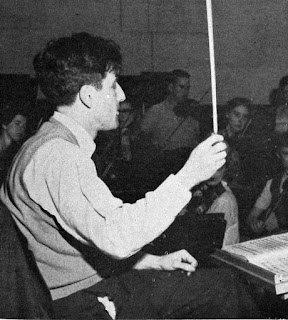LX. BEETHOVEN, Ludwig van (1770-1827)
Armed with a letter of introduction Beethoven seems to have met Mozart in 1787, when he was 17 years old. on his first trip to Vienna.
Mozart -- unhealthy and probably in the midst of writing some masterpiece or the other -- received the young man coolly.
"Play something," he barked. Beethoven played the opening of Mozart's Piano Concerto #24 in C Minor.
"Not that," said Mozart. "Anybody can play that. Play something of your own."
Beethoven did so, and Wolfgang excitedly ran into the other room, where his wife was entertaining some friends.
"Stanzi, Stanzi -- watch out for that boy! One day he will give the world something to talk about!"
**
He agreed to take him on as a pupil, but the death of Beethoven's mother recalled him back to Bonn.
By the time he finally made it back to Vienna in 1792, Mozart was dead.
His musical education continued with his studies with Haydn and Albrechtsberger, although he privately concentrated on studying Mozart's music.
He began to make a living as a pianist, playing his own first two concerti, and finally boldly premiered this symphony in 1800.
It is crucial in understanding Beethoven's genius to realize what a remarkable step forward this was.
**
The first movement begins on a "wrong chord" -- the dominant of the subdominant -- F Major:
The next bar features a deceptive cadence moving to A Minor. He then introduces another dominant chord in the "wrong" key -- D7 going to G.
By the time the Allegro begins, the (educated) audience would have realized how they'd been fooled.
**
The second movement (8:05) (in F Major) starts with this beautiful, simple theme in the second violins:
**
The third movement (14:39) -- titled "Menuetto," the traditional third movement of a symphony -- is instead, in fact, a scherzo. This would become a trademark of his later symphonies -- nearly always replacing the minuet with a fast scherzo.






















































